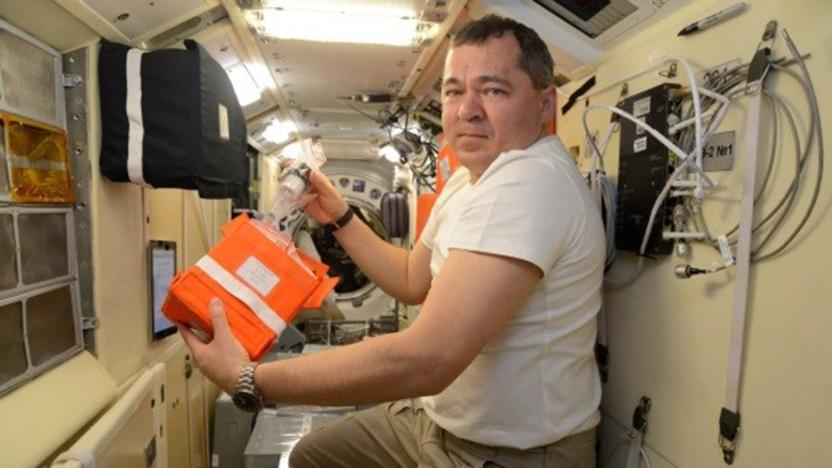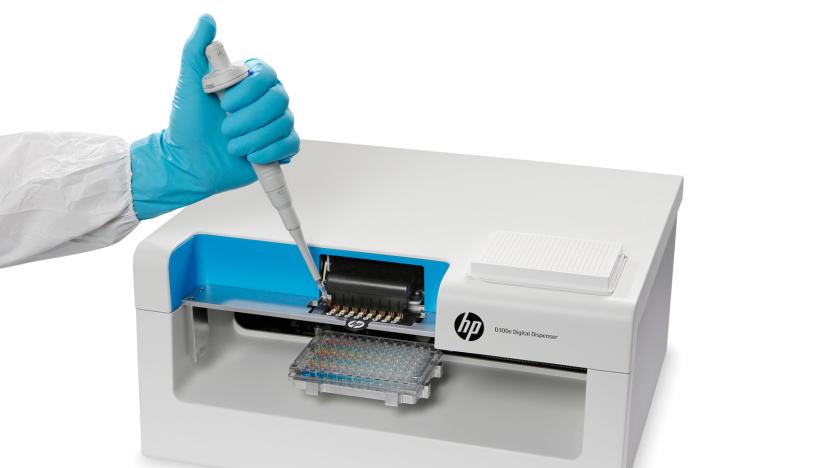bioprinter
Latest

Astronauts bioprint beef in space for the first time
Lab-grown meat is no longer confined to Earth -- Aleph Farms and partners have successfully grown meat in space for the first time. The experiment, conducted aboard the Russian section of the International Space Station on September 26th, used a bioprinter from 3D Bioprinting Solutions to produce a cultivated beef steak. Aleph's growth technique replicates cows' muscle tissue regeneration process, just in artificial conditions -- the only big change for spaceborne creation is the faster maturation, since you can print from all sides at once instead of coping with the limitations of gravity.

CDC uses HP bioprinters to speed up testing for new antibiotics
The Center for Disease Control and Prevention is turning to some bleeding edge tech in its bid to stamp out drug-resistant 'superbug' bacteria. It's buying a slew of HP bioprinters (the D300e you see above) as part of a pilot program that could speed up the testing of more effective antibiotics. The machines will give regional labs in New York, Minnesota, Tennessee and Wisconsin their first shot at printing drug samples used for developing and running antimicrobial susceptibility tests. Hospitals won't have to wait for testing or else risk mistakes like overusing drugs.

ICYMI: Boeing's swanky new space suits and 3D-printable skin
Today on In Case You Missed It: Boeing debuted its next-generation flight suit that astronauts will be wearing aboard its Starliner CST-100 when the spacecraft takes off in 2018. They're cooler, lighter and far more fashionable than the ones US Shuttle crews had to wear into space. Plus, who doesn't want to look like Benny the blue LEGO space guy? That's not all, a team of Spanish researchers have announced that they can now "print" human skin from their prototype 3D bioprinter. Simple culture some cells, feed them into the printer and this thing will spit out functional human skin. If only this technology were around in 1990, Liam Neeson wouldn't have had to go and kill all those folks who burned him alive. And finally, we got your TL;DR right here, folks. As always, please share any interesting tech or science videos you find by using the #ICYMI hashtag on Twitter for @mskerryd.

L'Oreal is 3D printing its own human skin to test cosmetics
The L'Oreal Group hasn't tested its products on animals worldwide since 2013, instead relying on a predictive model that utilizes a "Reconstructed Human Epidermis" -- basically bits of skin grown in a lab -- to ensure that its products are safe. Now the French cosmetics giant is teaming up with 3D bioprinting company Organovo to create the real thing...or at least as real as human skin that comes out of an ink jet nozzle can be.

Researchers tout progress with 'skin printers,' hope to one day treat battlefield wounds
We've already seen that living tissue can be printed using what amounts to a bio-inkjet printer, and some researchers from the Wake Forest Institute for Regenerative Medicine now say they've made some considerable progress that could bring the technology one step closer to use on the battlefield. Specifically, they've been able to speed up the healing of wounds on mice using a "printed" swath of tissue and completely heal the wound in three weeks, whereas an untreated wound did not heal itself in the same time period. Of course, there's no word on any plans for tests on humans just yet, but the researchers do plan to take one more step in that direction by moving on to tests on pigs next.

Invetech 3D bio-printer is ready for production, promises 'tissue on demand'
Say hello to "the world's first production model 3D bio-printer." What you're looking at is a machine capable of arranging human cells and artificial scaffolds into complex three-dimensional structures, which result in such wonderful things as replacement liver and kidney tissue, or such simple niceties as artificially grown teeth. All we're told of the internal workings is that the bio-printer utilizes laser-calibrated print heads and that its design is the first to offer sufficiently wide flexibility of use to make the device viable. Organovo will be the company responsible for promoting the new hardware to research institutions, while at the same time trying to convince the world that it's not the fifth sign of the apocalypse. Maybe if the printer didn't have a menacing red button attached to it, we'd all be a little less freaked out by it.


